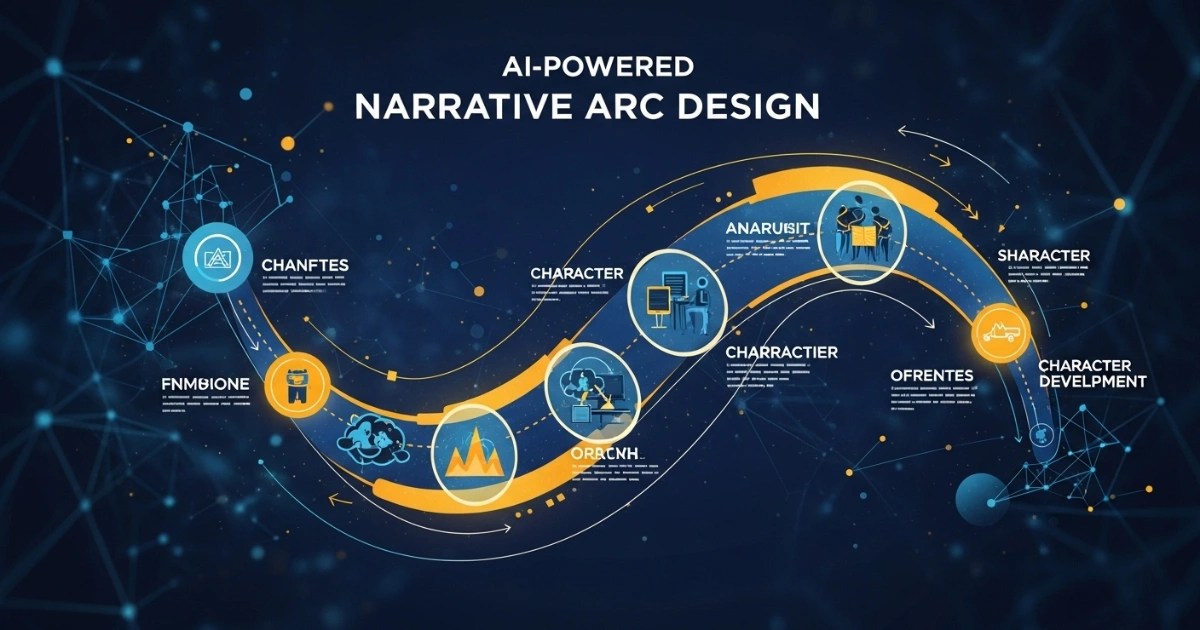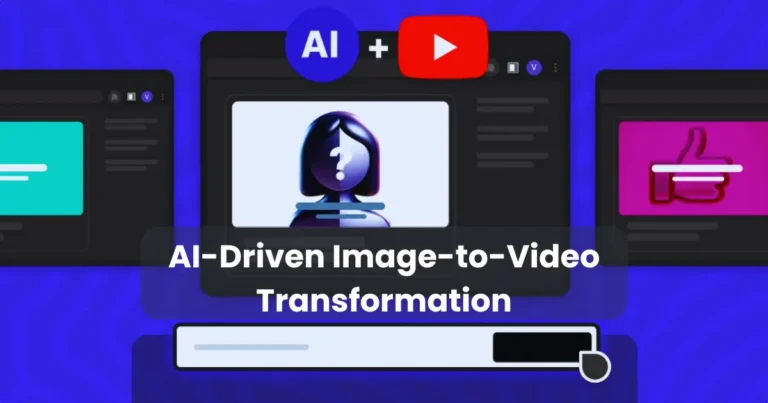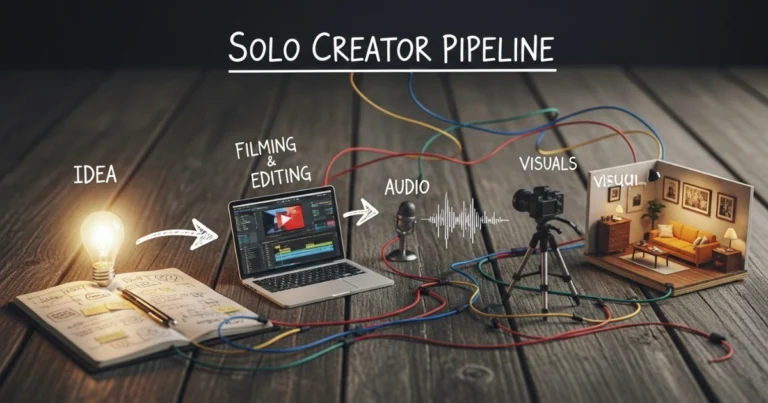Narrative Arc Design with AI: Crafting Compelling Stories in 2025

Contents
- 1 What Is Narrative Arc Design?
- 2 Why AI Is Transforming Storytelling
- 3 How AI Tools Facilitate Narrative Arc Design
- 4 Best AI Tools for Narrative Arc Design in 2025
- 5 Practical Tips for Using AI in Narrative Arc Design
- 6 Case Studies: AI in Action
- 7 Challenges and Limitations of AI in Narrative Arc Design
- 8 The Future of Narrative Arc Design with AI
Narrative arc design with AI is revolutionizing storytelling in 2025, empowering creators to craft compelling, emotionally resonant stories with unprecedented efficiency. By leveraging artificial intelligence, writers, game developers, and filmmakers can structure narratives that captivate audiences while saving time and enhancing creativity. This article explores how AI tools streamline the process of designing narrative arcs, from ideation to execution, while maintaining the emotional depth that defines great storytelling. Whether you’re a novelist, screenwriter, or content creator, understanding how to integrate AI into your creative process is essential for staying competitive in today’s fast-paced digital landscape. Let’s dive into the world of AI-driven storytelling and uncover actionable strategies to maximize your narrative potential.
What Is Narrative Arc Design?
A narrative arc is the structural framework that guides a story from beginning to end, ensuring it engages and satisfies the audience. It typically follows a pattern like Freytag’s pyramid, which includes exposition, rising action, climax, falling action, and resolution. Narrative arc design involves intentionally crafting these elements to create a cohesive and emotionally impactful story.
AI enhances this process by analyzing vast datasets of stories, identifying patterns, and suggesting plot points, character developments, and pacing adjustments. Unlike traditional methods, AI can process thousands of narratives in seconds, offering insights that help creators refine their arcs. For instance, tools like Sudowrite or Jasper can generate plot outlines or dialogue based on user inputs, ensuring the narrative remains engaging.
Moreover, AI-driven narrative arc design saves time. Instead of spending hours brainstorming, writers can input a premise, and AI generates a structured outline in minutes. This efficiency allows creators to focus on refining their vision, making narrative arc design with AI a game-changer for modern storytelling.
Why AI Is Transforming Storytelling
The integration of AI into narrative arc design is reshaping how stories are crafted. Here are some key reasons why AI is a transformative force:

1. Enhanced Creativity Through Data-Driven Insights
AI tools analyze existing stories, from classic novels to modern screenplays, to identify what makes them successful. By recognizing patterns in pacing, character development, and plot twists, AI provides suggestions that spark creativity. For example, an AI tool might recommend a plot twist based on successful thrillers, helping writers craft unexpected yet believable turns.
2. Time Efficiency
Creating a narrative arc from scratch can take weeks. AI reduces this time significantly by generating outlines, character profiles, or even full drafts in minutes. Tools like Plottr combined with AI integrations allow writers to visualize and tweak their arcs quickly, ensuring they meet audience expectations without sacrificing quality.
3. Personalization and Audience Targeting
AI can analyze audience preferences by scraping data from platforms like X or Goodreads. This allows creators to tailor their narrative arcs to specific demographics, ensuring their stories resonate with target readers or viewers. For instance, AI might suggest a faster-paced arc for young adult audiences or a slower, character-driven arc for literary fiction fans.
4. Consistency and Cohesion
Maintaining consistency in a complex narrative is challenging. AI tools track character arcs, plot points, and themes, flagging inconsistencies that might disrupt the story. This ensures a polished final product, saving creators from costly revisions.
By combining these benefits, narrative arc design with AI empowers creators to produce high-quality stories faster and more effectively than ever before.
How AI Tools Facilitate Narrative Arc Design
AI tools offer a range of functionalities to streamline narrative arc design. Here’s a step-by-step look at how they work:

Step 1: Ideation and Brainstorming
AI platforms like ChatGPT or Writesonic can generate story ideas based on simple prompts. For example, inputting “a dystopian thriller about a rogue AI” can yield multiple plot ideas, complete with settings, characters, and conflicts. This kickstarts the creative process, helping writers overcome the dreaded blank page.
Step 2: Structuring the Narrative Arc
Once an idea is selected, AI tools can create detailed outlines. Platforms like StoryLab.ai or NovelAI map out the narrative arc, suggesting key plot points like the inciting incident or climax. These tools often use established storytelling frameworks, such as the three-act structure or the hero’s journey, to ensure a balanced arc.
Step 3: Character Development
Compelling characters are the heart of any story. AI tools analyze character archetypes and suggest traits, motivations, and arcs that align with the narrative. For instance, an AI might recommend a flawed protagonist whose growth mirrors the story’s themes, adding depth to the narrative arc.
Step 4: Dialogue and Scene Writing
AI can generate dialogue that fits a character’s personality and advances the plot. Tools like Sudowrite excel at crafting natural-sounding conversations, while also suggesting sensory details to make scenes vivid. This ensures each scene contributes to the overall arc.
Step 5: Editing and Refining
After drafting, AI tools like Grammarly or ProWritingAid analyze the manuscript for pacing, tone, and clarity. They highlight areas where the narrative arc might sag, such as overly long exposition or rushed resolutions, allowing writers to refine their work efficiently.
By automating these steps, narrative arc design with AI maximizes productivity while preserving creative control.
Best AI Tools for Narrative Arc Design in 2025
Several AI tools stand out for their ability to enhance narrative arc design. Here’s a roundup of the best options available in 2025:

1. Sudowrite
Sudowrite specializes in creative writing, offering features like plot generation, character development, and scene expansion. Its “Story Engine” suggests narrative arcs based on user inputs, making it ideal for novelists and screenwriters.
2. Jasper
Jasper is a versatile AI writing tool that excels at generating outlines and long-form content. Its templates for storytelling frameworks help writers structure their arcs effectively, while its tone adjustment feature ensures consistency.
3. NovelAI
Designed for fiction writers, NovelAI uses advanced natural language processing to generate story arcs and dialogue. Its ability to mimic specific genres makes it a favorite for genre fiction creators.
4. Plottr
Plottr combines AI with visual plotting tools, allowing writers to map out their narrative arcs. Its AI-driven suggestions for plot points and character arcs streamline the planning process.
5. StoryLab.ai
StoryLab.ai focuses on ideation and outlining, offering AI-generated plot ideas and narrative structures. It’s particularly useful for beginners looking to craft their first story.
These tools, when used strategically, can transform narrative arc design with AI into a seamless, efficient process.
Practical Tips for Using AI in Narrative Arc Design
To maximize the benefits of narrative arc design with AI, follow these actionable tips:

1. Start with a Clear Vision
AI works best when given specific prompts. Define your story’s genre, tone, and target audience before using AI tools. For example, specify “a fast-paced sci-fi thriller for young adults” to get relevant suggestions.
2. Iterate and Refine
AI-generated content is a starting point, not a final product. Review and tweak suggestions to align with your creative vision. This ensures the narrative arc remains authentic to your voice.
3. Combine AI with Human Intuition
While AI excels at pattern recognition, human intuition is key for emotional depth. Use AI to handle repetitive tasks like outlining, but rely on your instincts for nuanced character development and thematic resonance.
4. Test with Your Audience
Use AI to analyze audience feedback from platforms like X. If early readers find the climax weak, AI can suggest alternative plot points to strengthen the arc.
5. Stay Updated on AI Advancements
AI tools evolve rapidly. In 2025, new features like real-time collaboration or advanced sentiment analysis could further enhance narrative arc design. Follow industry updates to stay ahead.
By combining AI’s capabilities with these strategies, you can craft narrative arcs that captivate and resonate with audiences.
Case Studies: AI in Action
To illustrate the power of narrative arc design with AI, let’s explore two real-world examples:
Case Study 1: The Indie Novelist
An indie author used Sudowrite to craft a fantasy novel. By inputting a premise about a reluctant hero, the AI generated a three-act structure with detailed plot points. The author refined the outline, using AI suggestions for subplots and character backstories. The result was a 80,000-word novel completed in three months, compared to the author’s usual six-month timeline. Reader reviews on Goodreads praised the novel’s pacing and emotional depth, proving AI’s value in narrative arc design.
Case Study 2: The Game Developer
A small game studio used NovelAI to design the narrative arc for an indie RPG. The AI suggested a branching storyline with multiple endings, tailored to player choices. By integrating AI-generated dialogue and plot twists, the studio reduced development time by 30%. The game received positive feedback on Steam for its immersive storytelling, showcasing how narrative arc design with AI can elevate interactive media.
These case studies highlight how AI can accelerate and enhance the storytelling process across different mediums.
Challenges and Limitations of AI in Narrative Arc Design
While AI is a powerful tool, it’s not without challenges. Here are some limitations to consider:

1. Lack of Emotional Nuance
AI can mimic emotional beats but struggles with the subtle nuances that make stories unforgettable. Human oversight is crucial to ensure emotional authenticity.
2. Risk of Generic Output
If not guided properly, AI can produce formulaic or predictable arcs. To avoid this, provide detailed prompts and refine AI suggestions to maintain originality.
3. Overreliance on Technology
Relying too heavily on AI can stifle creativity. Use AI as a collaborator, not a replacement, to preserve your unique voice.
4. Ethical Considerations
AI tools trained on existing works raise questions about originality and copyright. Ensure your use of AI complies with ethical and legal standards.
By addressing these challenges, creators can harness the full potential of narrative arc design with AI while maintaining creative integrity.
The Future of Narrative Arc Design with AI
Looking ahead, narrative arc design with AI is poised to evolve further in 2025 and beyond. Emerging trends include:

- Real-Time Collaboration: AI tools will enable multiple creators to work on a narrative arc simultaneously, streamlining team projects.
- Advanced Sentiment Analysis: AI will analyze audience emotions in real time, allowing creators to adjust arcs for maximum impact.
- Interactive Storytelling: AI will power dynamic narratives in games and virtual reality, adapting arcs based on user choices.
- Multimodal AI: Tools will integrate text, visuals, and audio to create immersive narrative experiences.
As these advancements unfold, narrative arc design with AI will become even more integral to storytelling, offering creators endless possibilities.
Conclusion
Narrative arc design with AI is transforming how stories are crafted, offering tools that save time, enhance creativity, and ensure audience engagement. By leveraging AI for ideation, structuring, and refining, creators can produce compelling narratives that resonate deeply. While challenges like emotional nuance and originality persist, strategic use of AI tools like Sudowrite, Jasper, and NovelAI can overcome these hurdles. As we move further into 2025, embracing narrative arc design with AI will be key to staying competitive in the creative industry. Start experimenting with these tools today, and unlock the full potential of your storytelling.






